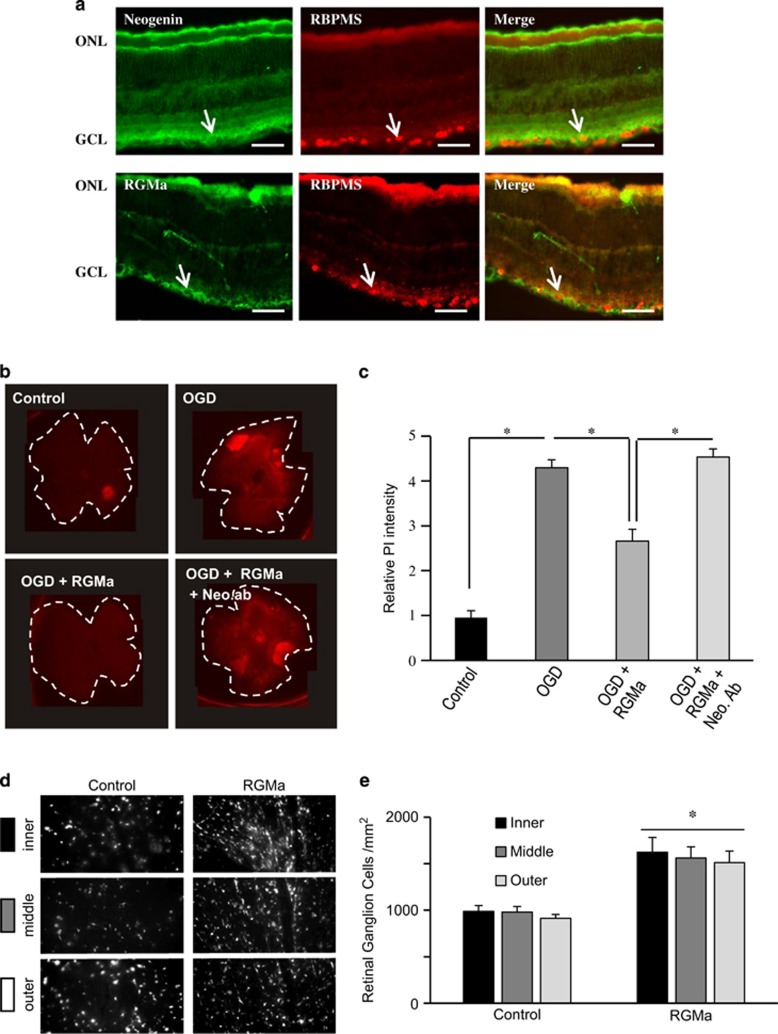Figure 1.
RGMa promotes RGC survival after ischemic insult. (a) Rat retina sections were stained with antibodies for Neogenin and RGMa and a marker for ganglion cells (RBPMS). Arrows indicate ganglion cells that express Neogenin or RGMa. ONL, optic nuclear layer; GCL, ganglion cell layer. Bar, 100 μm. (b) Retinal whole mounts were put in culture and submitted to OGD (1 h). One day after OGD, whole mounts were stained with PI to assess cellular death. Addition of RGMa to the medium reduced the OGD-induced cellular death. A Neogenin-neutralizing antibody (Neo-ab) suppressed the pro-survival effect of RGMa. (c) Quantifications of experiments presented in b show that RGMa significantly improved cell survival, an effect abolished by addition of anti-Neogenin (*P<0.005). (d and e) Rat eyes were submitted to ischemic insult (ligation of the optic artery) and injected with BSA (control) or RGMa. (d) Fluorescence micrographs of flat-mounted retinas showing Fluorogold-labeled RGCs at 14 days following ophthalmic artery ligation and treatments. Representative confocal micrographs taken in the inner, middle and outer retina. Control retinas had few surviving RGCs. Injection of RGMa increased RGC survival after retinal ischemia. (e) Quantification of the density of surviving RGCs (±S.E.M.) at 14 days following ophthalmic artery ligation and treatments. RGMa significantly increased RGC survival (*P<0.001) after ischemia

